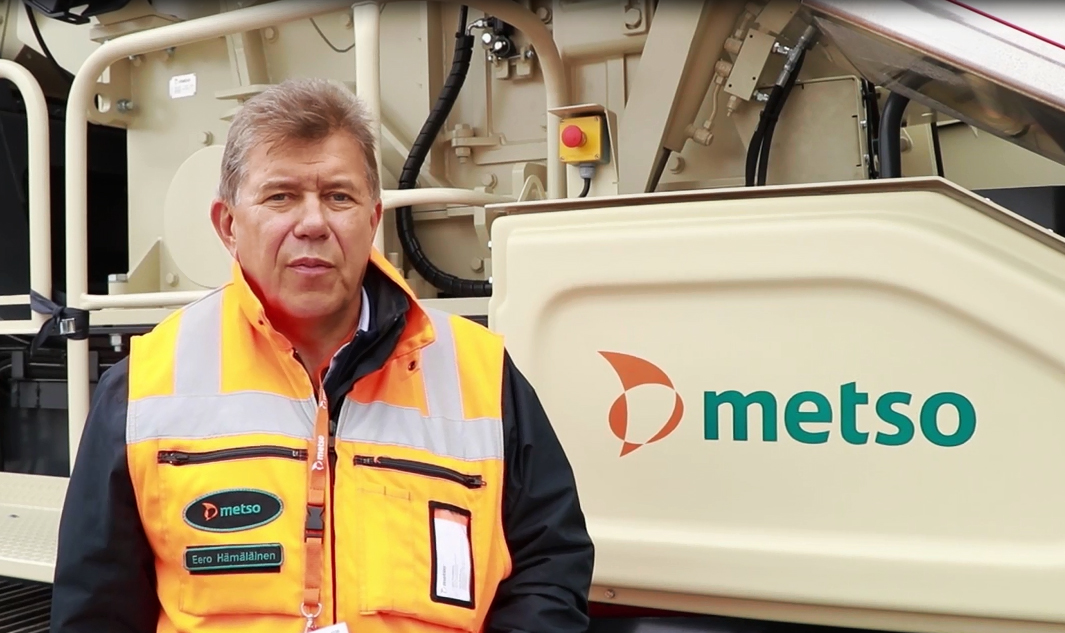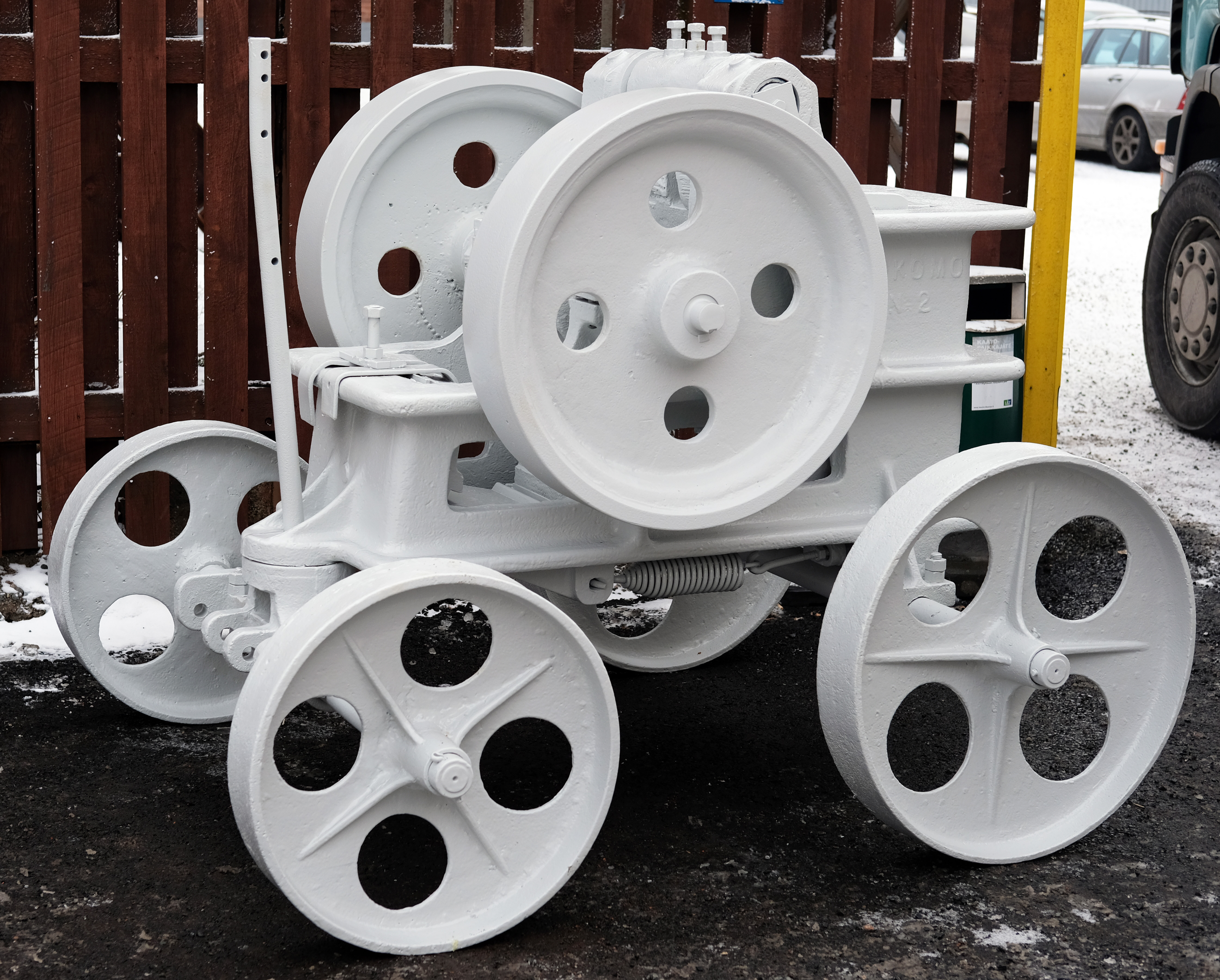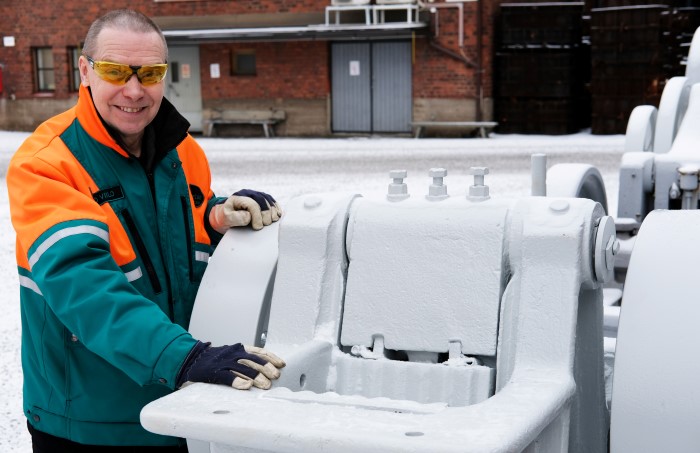The A2 crusher is mounted on cast iron wheels. It was last on active duty in the early 1990s at Markku Hokkanen’s farm in Keuruu.
There, it was used alongside a tractor to crush piles of stone collected from the farm’s fields. “I think we crushed a total of 700–800 cubic meters of stone with the A2. The crusher’s 22-by-28-centimeter jaw could take chunks the size of a human head, and the jaw crushed a trailer load of stone into rubble in a couple of hours,” Markku Hokkanen says.
“You had to be careful to keep the crusher’s speed at a maximum of 300 rounds per minute. If the speed was any faster, the working power was completely lost. You also couldn’t go near the crusher, as the jaw could shoot pieces of stone up into the sky.”




